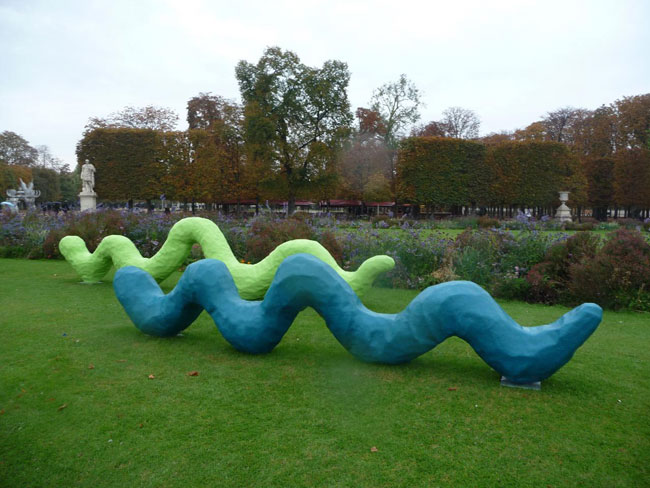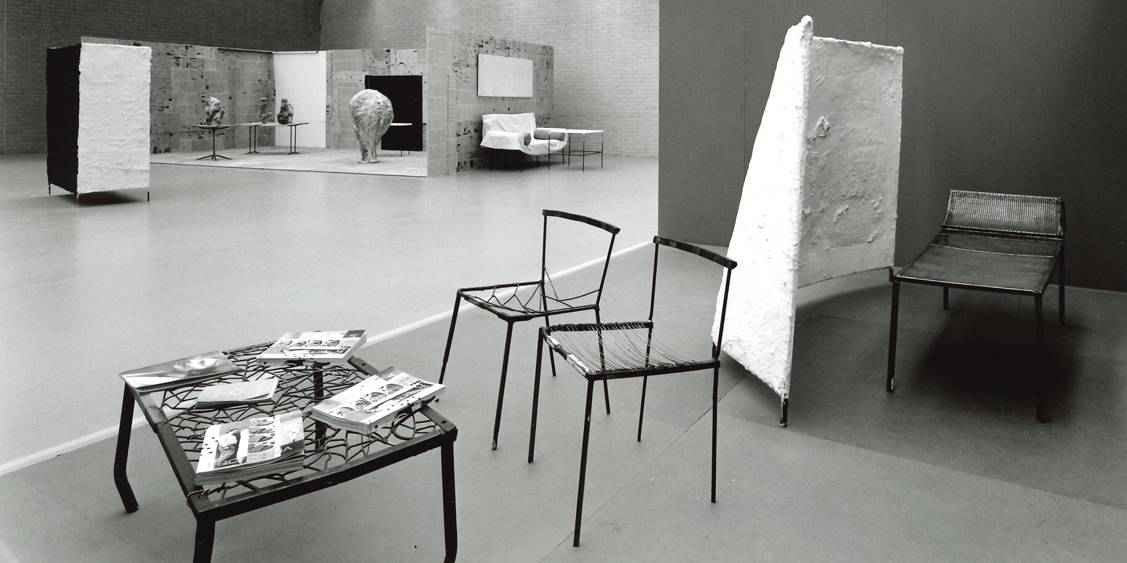

View Ocula's snapshots of the opening days. Too big for a booth, Unlimited is Art Basel's platform for substantial projects that transcend the limitations of the classical art fair structure. The 'Poster Designs'-both about the show and in it-implicated the viewer in the art. The details of the exhibition referred to-the show's title, venue, date and other relevant information-became the subject matter. The promotional design became an autonomous picture displayed in the show. From the mid- to late 2000s, West utilised painting and collage techniques in the 'Poster Designs' that accompanied his exhibitions. From the 1970s through to the late 2000s, he produced collages, combining advertising imagery with abstract compositional arrangements. West also worked with two-dimensional media. In Etude de couleur (1991) a colourful, panelled catwalk led to a functional urinal, highlighting the importance of colour while nodding to the heritage of Duchamp. Most of his large-scale installations contain humour or playfulness. West's first large-scale public installation, Auditorium (for the 1992 documenta IX), consisted of 72 sofas-made from metal frames, ornate Turkish rugs and foam-as seating for a parking lot cinema. Continuing this into the 2000s West made furniture such as Nannerl (2006)-composed of colourful coco mat, carpet on a steel frame-and provocatively introduced such pieces into exhibitions. Not intended as examples of cutting edge furniture design, some were too flimsy to be functional. By the late 1980s West produced more familiar designs for tables, chairs, lamps and other domestic objects. This approach is visible in the 2.1-metre piece, Untitled (2010), with its patchwork of lacquered aluminium sheeting. Initially, influenced by the early-20 th-century design ethic of the Vienna Secessionists, he welded together pieces of scrap metal in a collage-like technique to make furniture resembling his 'Adaptives'. Rising to prominence in the mid-1980s, West also began to produce and exhibit furniture as both installation sculptures and interventions in museum spaces. His vividly painted, organic, abstract papier mâché works such as Untitled (painted by Herbert Brandl) (1988) also developed into large-scale, imposing pieces like Untitled (large sculpture with can) (2009) and Lemur (2009). The greatest manifestations of this were his later outdoor works such as The Ego and the Id (2008), with their colourful, spindly, snaking and bulbous forms. The 'Adaptives'-made from non-traditional materials and roughly aligning form and function by encouraging viewer participation-became the foundation of the artist's practice.įrom the 1980s, West's biomorphic sculptural forms began to develop in scale and size, translating into grand, painted or lacquered metal works and installations.

Some of the exhibited 'Adaptives' were supplemented with videos of people wearing them. Functioning as extensions of limbs, their completion as art could only come by the viewer adorning and performing with them.

These small objects-made of plaster or papier mâché and painted white-were abstract forms ergonomically designed to be worn.
#Collage franz west series#
West's earliest series of signature sculptures were the 'Adaptives' ('Passstücke') from the late 1970s. It is often said that he felt it does not matter what art looks like but how it is used. In all of West's works his creative process is left visible nothing is perfect or smooth. He made his art from plaster, papier mâché, wire, aluminium, styrofoam and carpet: materials one might expect to find in the home, the workshop or a typical school art room. West's choice of materials is indicative of his rejection of high culture's pretentions. The theme of communication and interaction is present in all of West's work as he sought to disrupt the traditionally passive relationship between art viewers. Instead he sought something more accessible. He was exposed to the performance art of the Viennese Actionists in the 1960s and 1970s, but rejected their insistence on provocative, violent ordeals and complex existential intensity. In 1977 West returned to Vienna to study art under Bruno Gironcoli at the Academy of Fine Arts, graduating in 1982. He started making art-drawing, then sculpture and performance-around 1970, though he was at this point without any formal training.

He had initially been studying civil engineering but dropped out in the mid-1960s to travel around Europe and the Middle East. Born to communist parents in Allied-occupied post-war Vienna, West did not engage in artistic pursuits until he was well into his 20s.


 0 kommentar(er)
0 kommentar(er)
